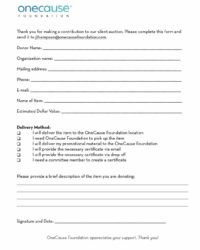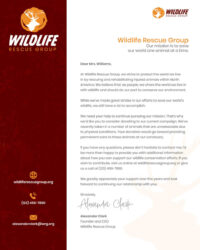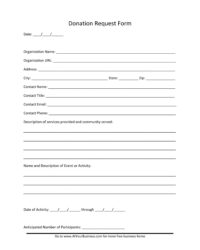Utilizing such a structure offers several advantages. It streamlines the request process, saving time and effort for both the organization and the donor. A clear, well-organized request increases the likelihood of a positive response. Furthermore, a standardized format helps maintain a professional image and builds trust with potential contributors.
This foundation of effective fundraising will be further explored by examining key components, best practices, and real-world examples.
Key Components
Effective solicitation relies on several crucial elements working in concert. These components ensure clarity, build trust, and ultimately increase the likelihood of securing contributions.
1. Introduction and Organization Background: This section succinctly presents the organization, its mission, and its history. A compelling narrative can establish an emotional connection with potential donors.
2. Statement of Need: A clear and concise explanation of the specific funding requirement is essential. This section should detail the problem being addressed and how the requested funds will contribute to a solution.
3. Project Budget and Timeline: Transparency builds trust. Providing a detailed budget and a realistic timeline demonstrates responsible resource management and allows donors to understand precisely how their contributions will be utilized.
4. Impact Measurement: Demonstrating the potential impact of the donation is crucial. Quantifiable metrics and clear outcomes provide donors with tangible evidence of the value of their contribution.
5. Donation Options and Instructions: Offering various donation methods (online, mail, etc.) and providing clear instructions simplifies the giving process. This convenience encourages prompt action.
6. Contact Information and Acknowledgement: Providing clear contact information facilitates communication and allows for prompt acknowledgement of the donation, fostering a positive donor relationship.
7. Call to Action: A direct and compelling call to action encourages donors to contribute and reinforces the urgency and importance of the request.
A well-crafted structure, encompassing these key components, forms the basis of a persuasive and effective request, maximizing the potential for securing necessary funding.
How to Create a Donation Request Application Template
Creating a standardized framework for donation requests ensures consistency, professionalism, and efficiency in fundraising efforts. The following steps outline the process of developing a template.
1. Define the Purpose and Scope: Clearly articulate the overall fundraising goals and the specific purpose of the template. This clarifies the target audience and the types of requests the template will accommodate.
2. Develop a Consistent Structure: Establish a logical flow of information within the template. Sections should progress naturally from organizational background and need to budget, impact, and call to action.
3. Craft Compelling Content: Use persuasive language to convey the organization’s mission and the urgency of the need. Focus on the impact donations will have and how they align with donor values.
4. Incorporate Visual Elements: Consider incorporating visuals such as logos, images, or charts to enhance the template’s appeal and effectively communicate key information.
5. Simplify the Donation Process: Provide clear instructions and multiple donation options (online platforms, mailing address, etc.) to make contributing as straightforward as possible.
6. Personalize the Template: While maintaining a consistent structure, allow for customization to tailor the request to specific projects or donor segments.
7. Test and Refine: Before widespread implementation, test the template with a small group to gather feedback and identify areas for improvement. Refine the template based on this feedback to maximize its effectiveness.
A well-designed template streamlines the request process, strengthens donor engagement, and contributes significantly to successful fundraising initiatives. Regular review and refinement of the template ensure its continued effectiveness and relevance.
Effective solicitation of funds requires a structured and well-considered approach. A standardized framework ensures consistency, professionalism, and clarity in communicating organizational needs and the impact of potential contributions. Key components such as a compelling narrative, detailed budget, and clear impact measurement build trust and encourage donor engagement. Careful consideration of these elements, combined with a streamlined donation process, contributes significantly to successful fundraising outcomes.
Ultimately, a well-crafted structure serves as a vital tool for organizations seeking to secure essential resources. Its strategic implementation can significantly enhance fundraising efforts and support the realization of organizational missions, thereby contributing to a greater positive impact.


